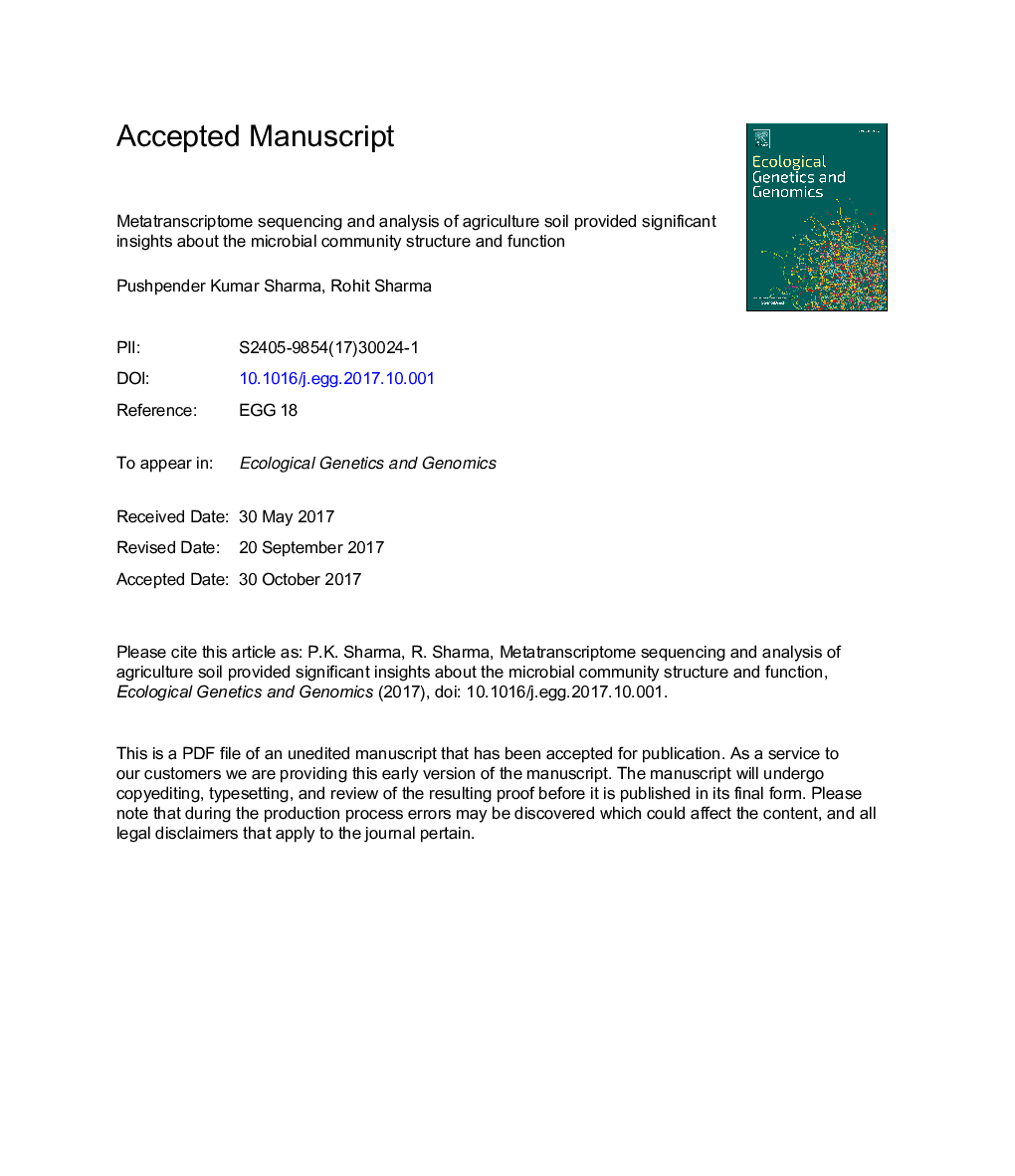| Article ID | Journal | Published Year | Pages | File Type |
|---|---|---|---|---|
| 8644131 | Ecological Genetics and Genomics | 2018 | 31 Pages |
Abstract
In the present study, we report sequencing and analysis of metatranscriptome from agriculture soil having long history of usage of chemical fertilizers and pesticides. To meet our objectives, we estimated the presence of pesticides and heavy metals in this agriculture soil, followed by extraction of total RNA from soil in replicates. Enrichment of prokaryotic mRNA, and preparation of cDNA libraries from soil yielded â¼11.49 and â¼8.43 Gb data, after Hiseq 2000 Illumina sequencing. Sequences recovered showed â¼55% GC contents and a Phred score >30. Taxonomic annotation of affiliated sequences and their subsequent analysis revealed presence of organisms from diverse origin, in the following order: Bacteria > Archeae > Eukaryotes > Viruses. Among several bacterial genera, Achromobacter, Pseudomonas, Bacillus, Sphingobium, Micrococcus, Serratia and Streptomyces involved in pesticide degradation showed high abundance. Interestingly, bacterial genera i.e. Ralstonia, Desulfobacterium, Desulfobulbus, Thiobacillus, Arthrobacter, Acinetobacter, Rhodospirillum capable of detoxifying the heavy metals were also observed. Transcripts related to degradation of aromatic compounds that include the Catechol 1, 2-dioxygenase, Benzoate 1, 2-, Intradiol ring-cleavage dioxygenase, Gentisate 1,2-dioxygenase etc. demonstrated high abundance. Furthermore, transcripts encoding mercuric ion reductase, thioredoxin reductase, and selenide water dikinases also showed more abundance. Detailed analysis of various metabolism revealed that bacteria in this ecosystem are dependent on organosulfonated compounds for their growth and development. Additionally, more abundance of transcripts related to transportation of phosphate in this soil may be correlated with the phosphate starved condition in this environment.
Related Topics
Life Sciences
Biochemistry, Genetics and Molecular Biology
Genetics
Authors
Rohit Sharma, Pushpender Kumar Sharma,
